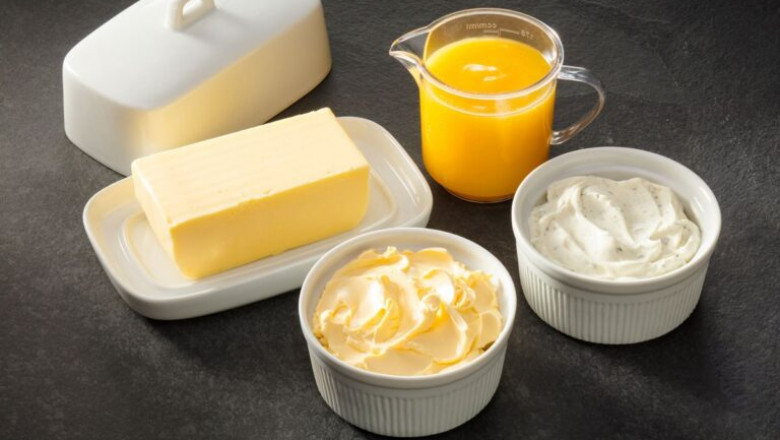views
What is Margarine?
Margarine is a butter alternative spread made from vegetable oils. It was first developed as a low-cost substitute for butter in the 1870s.
Early History
While the first margarine was invented in 1869 by French chemist Hippolyte Mège-Mouriés, its popularity really took off in the late 19th century. Initially marketed as a cheaper butter alternative for the working classes, margarine allowed companies to use inexpensive vegetable oils rather than cream from cows. This helped address the demand from growing urban populations while keeping food costs low. By the early 20th century, margarine had become a popular staple across Europe and North America.
Composition and Production
Modern Margarine is made from vegetable oils—such as soybean oil, canola oil, or palm oil—combined with water and emulsifiers. Emulsifiers help blend the oil and water components without separating. Additional ingredients like flavorings, colors, and vitamins are also added.
To produce margarine, the vegetable oils first undergo hydrogenation, a process that makes the liquid oils semi-solid at room temperature. This gives margarine its trademark spreadable texture similar to butter. The hydrogenated oils are then mixed with water and emulsifiers before flavorings are blended in. The mixture is churned and processed to achieve the final creamy spread consistency.
Nutrition Comparison to Butter
On a nutritional basis, margarine is generally lower in saturated fat than butter. While butter naturally contains around 80% saturated fat, margarine is designed to be lower in this, typically providing around 31-39% of total fat from saturated sources. Margarine is higher in polyunsaturated and monounsaturated fats which have been linked to possible heart health benefits when consumed in moderation as part of a balanced diet.
In terms of calories, a single tablespoon of butter provides around 100 calories compared to around 90-95 calories from the same amount of margarine. There is little difference in total fat content between the two spreads on a gram-for-gram basis.
However, not all margarines are created equal. Those containing tropical oils such as palm and coconut have higher levels of saturated fat than other vegetable oil varieties. The type of emulsifiers and processing methods also impact a margarine's overall nutritional profile. Reading labels is important for determining saturated fat and trans fat content.
Controversy around Trans Fats
For many decades, partially hydrogenated vegetable oils—the source of trans fats—were widely used in margarine production to achieve the desired texture. In the 1990s, scientific evidence began linking trans fats to negative heart health effects, notably increasing levels of LDL "bad" cholesterol and risk of coronary heart disease.
This led to many countries either banning or limiting the amount of trans fats allowed in processed foods. Major international margarine brands worked to reformulate their products using alternative ingredient methods that did not involve partial hydrogenation. As a result, modern margarines generally contain little to no artificial trans fats. However, small amounts may still be present depending on manufacturing processes.
Popular Uses and Varieties
Smooth and spreadable margarines can be used similarly to butter, spread on breads, biscuits, muffins, and other baked goods. Many varieties also work well for sautéing or cooking. Special formulations exist for baking purposes to mimic butter’s performance in pastries and recipes. Margarine comes in several forms at grocery stores:
- Stick margarine—Original stick form for spreading and general use
- Soft tub/squeeze margarine—Softer texture ideal for spreading and crumbling into recipes
- Light/low-fat margarine—Formulations containing fewer calories and less fat per serving
- Butter-flavored margarine—Enhanced butter taste for those who prefer it
- Margarine-blend spreads—Combinations containing some butter to straddle both items
In while butter remains popular for its rich flavor, margarine delivers a similar spreadable texture at a lower cost. Careful choice of ingredients avoids negative trans fat impacts, offering it as a suitable substitute in balanced meal planning. With various types available, margarine caters well to vegetarian, budget, and general consumer preferences as a dairy alternative.
Get This Report in Japanese Language: マーガリン
Get This Report in Korean Language: 마가린
About Author:
Vaagisha brings over three years of expertise as a content editor in the market research domain. Originally a creative writer, she discovered her passion for editing, combining her flair for writing with a meticulous eye for detail. Her ability to craft and refine compelling content makes her an invaluable asset in delivering polished and engaging write-ups.
(LinkedIn: https://www.linkedin.com/in/vaagisha-singh-8080b91)






















Comments
0 comment